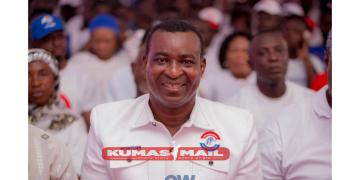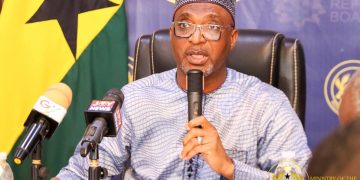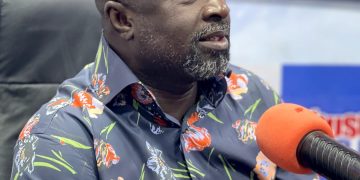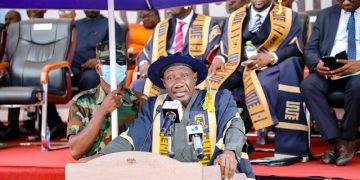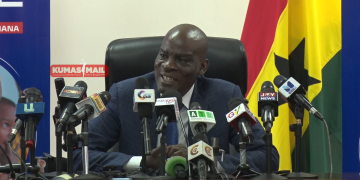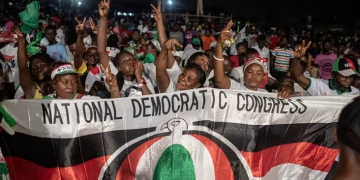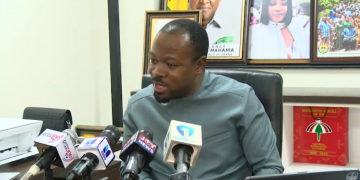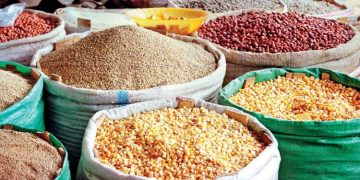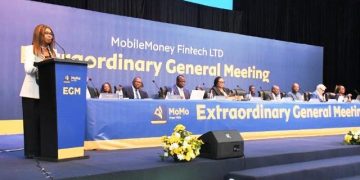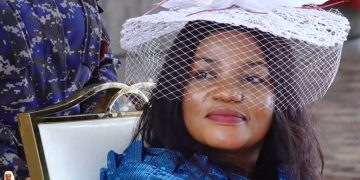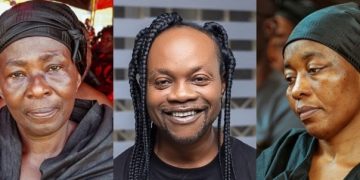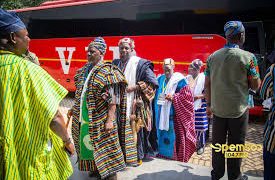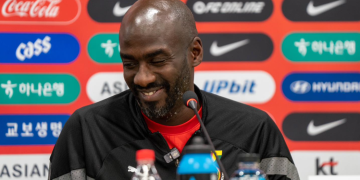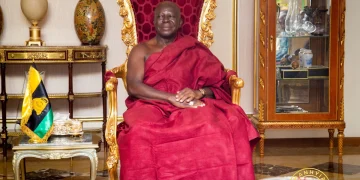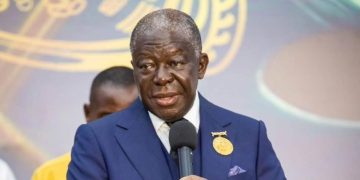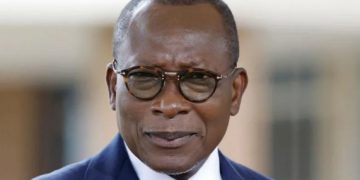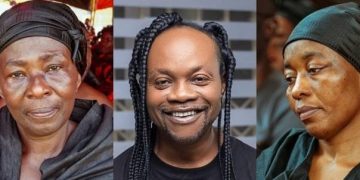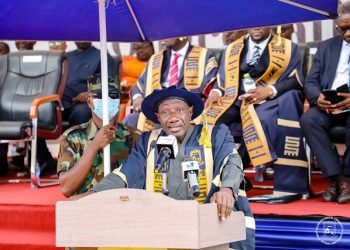The theatre of the Tamale Centre for National Culture has transformed into a living archive of Northern Ghana. The calmness of the hall in the early hours contrasts sharply with the hum that builds as visitors begin filing past the photo frames. Once conversations start, the space fills with excitement. People point at images, whisper memories, ask questions and sometimes pause in awe at moments frozen in time.
This is the scene at the ongoing Northern Ghana Foto Festival (NGFF), which opened on Sunday, November 16, 2025, and continues throughout to the weekend.
Organised by Foto4Change and Buta Visual Agency (BVA), the weeklong exhibition is attracting a steady stream of artists, journalists, students, photographers, traditional leaders, academics and tourists among others. They all come for one reason: to witness the largest visual celebration of northern culture ever assembled in Ghana.
The festival’s Director and the Team Lead for Foto4Change, Geoffrey Buta, describes NGFF as a cultural preservation mission. According to him, “Our forefathers preserved our culture orally. Today, we need to see it, and seeing it is through visuals. That is why we asked photographers to bring photos that capture our culture, heritage and community.”
What began as a plan to feature 30 photographers grew far beyond expectations. Before submissions closed, almost 70 photographers had sent in their work, contributing more than 500 photographs centred on culture, heritage and community. All the images represent scenes from the five northern regions.
Foto4Change, one of the organising bodies, is a nonprofit visual communication organisation that uses photography, video and immersive storytelling to highlight social issues by empowering vulnerable groups. Its co-organiser, Buta Visual Agency, is a photography company that provides services to individuals and major organisations.
Inside the theatre, visitors gravitate toward different images for different reasons. One of the most outstanding photographs on display is the traditional funeral performance of the late Paramount Chief of the Nandom Traditional Area, Naa Dr. Charles Puoure Puobe Chiir VII. Captured by professional photographer Ngmenviel Kuuire, a native of Nandom, the moving image shows the late chief raised in a ceremonial cradle as mourners gather around him to pay their last respects. Many visitors stand quietly before this frame, some drawn in by the cultural grandeur, others by the raw emotion it holds.
For Geoffrey Buta, the festival is as much about community identity as it is about artistic expression. “When people talk about the Hamba Festival or traditional weddings, we want the younger ones to know exactly what these things look like. This exhibition is our way of preserving these stories forever,” he said.
He shared that the idea first began as a personal archive for his children and grandchildren, before realising how limiting that would be. “I realised I was being selfish. The people I photograph deserve to be seen. And other photographers in the region are doing amazing work too,” he said. “Why not create a space where we can showcase all these stories and allow others to appreciate them?”
The exhibition reflects the broad and diverse nature of Northern Ghanaian life. From festivals bathed in firelight, to marriage ceremonies, funerals, landscapes, artisans at work and everyday community activities, the images capture both the ordinary and the extraordinary moments that define the region.
Putting together such a festival has not been without challenges. Everything on display represents years of travel, patience and personal investment from photographers. “These things are expensive,” Buta said. “Transport, accommodation, time, equipment. And no one is paying the photographers to do this. That is why many lose interest. We hope partners can come on board to support not just this festival, but other visual storytellers documenting our culture.”
The Northern Ghana Foto Festival is designed to continue beyond Tamale. NGFF is an annual event that rotates from region to region, giving communities the opportunity to see their stories reflected on the walls. The next stop is expected to be the Savannah Region in 2026.
As visitors continue to stream through the exhibition this week, many leave with a renewed appreciation for the culture they grew up with or are only now discovering. The festival is more than an exhibition. It is a reminder that the stories of Northern Ghana live in the people, the traditions and the visuals that capture them.
“We are simply creating a space for people to see themselves,” Buta said. “That is what this festival is about.”
Source: www.kumasimail.com


